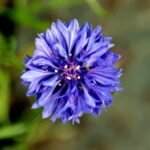Pruning and cutting back of the Hosta

While Hostas are not plants that require intricate or regular pruning in the same way that many shrubs or trees do, a few simple cutting practices can significantly enhance their appearance, health, and vigor. The primary pruning tasks for Hostas involve removing spent flower scapes, trimming away damaged leaves during the growing season, and cutting back the entire plant in preparation for winter. These straightforward maintenance activities, often referred to as deadheading and sanitation, play a key role in directing the plant’s energy, preventing disease, and maintaining a tidy and attractive garden. This guide will detail the proper techniques and timing for pruning and cutting back your Hostas to keep them looking their best throughout the year.
The most common pruning task performed on Hostas during the summer is the removal of the flower scapes, a practice known as deadheading. Hostas produce tall stalks, or scapes, that bear clusters of flowers, typically in shades of lavender or white. While some gardeners enjoy the floral display and the hummingbirds it attracts, many Hosta enthusiasts prefer to remove them to keep the focus purely on the plant’s magnificent foliage. Removing the flower scapes encourages the plant to direct its energy back into developing stronger roots and producing more leaves, rather than expending its resources on seed production.
The ideal time to cut the flower scapes can vary based on your personal preference. You can choose to cut them as soon as they emerge if you do not wish to see the flowers at all. Alternatively, you can enjoy the blooms and then cut the scapes off as soon as the last flower has faded, but before the plant begins to form seed pods. Using a clean pair of pruning shears or scissors, simply snip the stalk off as close to the base of the plant as possible without damaging any of the surrounding leaves. This simple act keeps the plant looking neat and tidy and can contribute to a more robust plant in the long run.
Throughout the growing season, it is also good practice to perform cosmetic pruning by removing any leaves that become damaged. Leaves can be torn by wind or hail, eaten by pests, or may develop fungal spots or scorched edges. Trimming away these unsightly leaves not only improves the overall appearance of the plant but also serves as a form of sanitation, removing potential sources of disease. When removing a damaged leaf, follow its petiole (stem) down to the base of the plant and make a clean cut. This prevents leaving behind dead stubs that could become entry points for rot or disease.
It is important to maintain good hygiene when making any cuts on your Hosta plants. Always use sharp, clean tools to ensure you are making a clean cut rather than crushing the plant tissue. More importantly, it is highly recommended to sterilize your pruning tools between plants, especially if you have a large collection. Wiping the blades with a cloth soaked in 70% isopropyl alcohol or a 10% bleach solution is a critical step in preventing the spread of plant diseases, most notably the incurable Hosta Virus X (HVX), from one plant to another.
More articles on this topic
Deadheading Hosta flowers
The practice of deadheading, or removing the spent flower scapes from Hosta plants, is a topic of some debate among gardeners, but it offers several distinct benefits. The primary reason for deadheading is to redirect the plant’s energy. After a flower is pollinated, the plant’s biological imperative is to produce seeds, a process that requires a significant amount of metabolic energy. By cutting off the flower stalk before seed pods can develop, you interrupt this process and allow the plant to conserve that energy and redirect it towards more desirable growth, such as developing a stronger root system and healthier, more abundant foliage. This can be particularly beneficial for young or newly established plants.
A second major benefit of deadheading is purely aesthetic. For many gardeners, the main attraction of a Hosta is its leaves, and the tall, sometimes gangly flower scapes can be seen as a distraction that detracts from the beautiful, mounding form of the foliage. Once the flowers have faded, the remaining bare stalks can look untidy and can mar the otherwise pristine appearance of the plant. Removing them promptly results in a cleaner, more manicured look in the garden, keeping the visual emphasis squarely on the shape, color, and texture of the leaves.
The timing for deadheading is flexible. Some gardeners who dislike the flowers altogether will prune the scapes as soon as they begin to emerge from the crown. However, many people enjoy the delicate flowers and the pollinators they attract. If this is the case, the best practice is to wait until all the flowers on a single stalk have withered and begun to drop, then make your cut. Cutting at this stage prevents the formation of seed pods while still allowing you to enjoy the full bloom period. It is generally better to remove the scapes individually as they finish flowering rather than waiting for all of them to be done, which keeps the plant looking its best throughout the mid to late summer.
To properly remove a flower scape, use a sharp and clean pair of bypass pruners or garden scissors. Follow the stalk down into the base of the plant’s foliage and make a clean cut as low as you can without injuring the crown or the surrounding leaf petioles. This deep cut ensures that you are not left with unsightly, leafless stems sticking out of the plant. The removed scapes can be added to the compost pile. This simple, two-minute task can make a significant difference in both the appearance and the long-term vigor of your Hosta plants.
More articles on this topic
The end-of-season cutback
The most significant pruning task for Hostas occurs at the end of the growing season and involves cutting the entire plant back to the ground in preparation for winter. This end-of-season cutback is a crucial part of garden sanitation and plays a vital role in the health of your plants for the following year. However, the timing of this task is extremely important. You must wait until the foliage has completely died back on its own, which typically happens after the plant has experienced several hard frosts. The leaves will turn yellow or brown and become limp and collapsed.
It is essential to allow this natural process of senescence to occur because, during this time, the plant is actively withdrawing valuable carbohydrates and nutrients from the leaves and storing this energy in its crown and root system. This stored energy is what the plant will use to survive the winter and to fuel the emergence of new growth in the spring. Cutting the foliage back prematurely, while it is still green and photosynthetically active, will deprive the plant of this critical energy transfer and can result in a weaker, less vigorous plant the following year. Patience in the fall is key.
Once the foliage has fully died back, the process of cutting it back is simple. Use a pair of sharp pruners or garden shears to cut all of the dead leaf stalks off at the base, leaving just an inch or two of stub above the soil line. This removes the decaying leaf matter that serves as a prime overwintering site for slug eggs and fungal spores. Clearing away this debris creates a clean environment, significantly reducing the pest and disease pressure your plants will face when they emerge in the spring.
After cutting back the foliage, it is important to gather all the debris and remove it from the garden bed. Do not simply leave it on the ground to decompose. If your plants have been healthy all season, this material can be safely added to a hot compost pile. However, if you have had any issues with fungal diseases like anthracnose or suspect any other pathogens, it is much safer to dispose of the debris by bagging it for the trash or by burning it. This final act of sanitation is your best defense for ensuring a healthy start to the next gardening season.
















